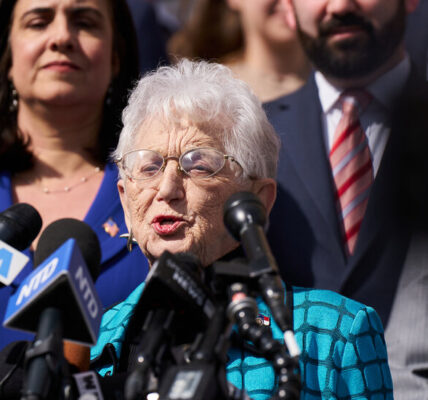The Supreme Court struck down on Friday a ban on bump stocks enacted by the Trump administration after a deadly mass shooting in Las Vegas in 2017.
By a vote of 6 to 3, with the court splitting along ideological lines, the justices found that the Trump administration had exceeded its power when it prohibited the device, an attachment that enables a semiautomatic rifle to fire at a speed rivaling that of a machine gun.
The decision is a forceful rejection of one of the government’s few steps to address gun violence, particularly as legislative efforts have stalled in Congress.
Justice Clarence Thomas wrote the majority opinion, finding that the federal Bureau of Alcohol, Tobacco, Firearms and Explosives had exceeded its statutory authority by issuing a rule that classified bump stocks as machine guns.
Justice Sonia Sotomayor filed a dissent, with the court’s two other liberal justices, Justices Elena Kagan and Ketanji Brown Jackson joining her.
Under the ban, possession or sale of bump stocks could lead to prison time.
Although the case centers on firearms, it is not a Second Amendment challenge. Rather, it is one of several cases this term seeking to undercut the power of administrative agencies.
The challenger was Michael Cargill, a gun shop owner in Texas, backed by the New Civil Liberties Alliance, an advocacy group with financial ties to Charles Koch, a billionaire who has long supported conservative and libertarian causes. The organization primarily targets what it considers unlawful uses of administrative power.
During the oral arguments in February, the case appeared to turn on whether the device transforms a firearm into a “machine gun.” That would enable the accessory to be prohibited as part of a category heavily regulated by the A.T.F.
During arguments, the justices appeared to struggle to understand the mechanics of a bump stock and precisely how it increases a gun’s firing speed.
Under the National Firearms Act of 1934, Congress outlawed machine guns, defined as “any weapon which shoots, is designed to shoot, or can be readily restored to shoot, automatically more than one shot, without manual reloading, by a single function of the trigger.” That definition was expanded under the Gun Control Act of 1968 to include parts that can be used to convert a weapon into a machine gun.
Until the Trump administration enacted its ban, bump stocks were considered legal; under an earlier interpretation of the law, they increase the speed of a gun by sliding the stock back and forth to rapidly pull the trigger, not by “a single function of the trigger” as required for a machine gun.




